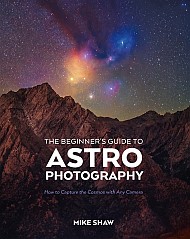Astronomy
SpaceX’s Starship Succeeds in Final Test Flight of 2025
With the successful 11th test flight of its Starship megarocket, SpaceX is on the cusp of a new era in spaceflight
A “Great Wave” Is Crashing through the Milky Way
Precise measurements of stars’ motions show that a wave is propagating outward from our galaxy’s center — perhaps from a long-ago collision with another galaxy.
The post A “Great Wave” Is Crashing through the Milky Way appeared first on Sky & Telescope.
Mathematicians Are Making Earth Based Telescopes Rival Space Observatories
Earth's atmosphere has always been the enemy of ground based astronomy and don’t I know it. What would otherwise be crisp, clean datasets gets turned into blurry smudges. Space telescopes avoid the problem entirely but can only photograph tiny fragments of sky. Now, a team of mathematicians has cracked the code with an elegant algorithm that strips away atmospheric interference in seconds, potentially giving ground based observatories space quality vision whilst keeping their ability to survey great regions of sky.
How Urea and Nickel Held Back Earth's Oxygen Revolution
When I spotted a headline about Earth's ancient oceans and urea, my brain immediately went to the obvious place. Urea, the same compound found in urine. Yes, scientists are telling us that a component of wee played a crucial role in one of the most important events in our planet's history. Sometimes science really does have a sense of humour.
Coral Die-Off Marks Earth’s First Climate ‘Tipping Point,’ Scientists Say
A surge in global temperatures has caused widespread coral reef bleaching and death around the world
Nobel Prize Winner Shimon Sakaguchi Reflects on How He Discovered Regulatory T Cells
Nobel laureate Shimon Sakaguchi reflects on the role of regulatory T cells in peripheral immune tolerance and how the cells could transform treatment for cancer, autoimmune disease and organ transplant rejection
Simulating Complex Coronal Mass Ejections Shows A Weakness In Space Weather Forecasting
Avoiding, or at least limiting the damage from, geomagnetic storms is one of the most compelling arguments for why we should pay attention to space. Strong solar storms can have an impact on everything from air traffic to farming, and we ignore them at our own peril and cost. Despite that threat, the tools that we have applied to tracking and analyzing them have been relatively primitive. Both simulations and the physical hardware devoted to it require an upgrade if we are to accurately assess the threat a solar storm poses. As a first step, a new paper from a group led by researchers at the University of Michigan created a much more detailed simulation that shows how important it is that we also have the appropriate sensing hardware in place to detect these storms as they happen.
A radical rethink of what makes your diet healthy or bad for you
A radical rethink of what makes your diet healthy or bad for you
Your diet is probably dangerously acidic but there’s a simple solution
Your diet is probably dangerously acidic but there’s a simple solution
Native Americans Had Their Own Tales to Tell About Space Aliens — and Here's a New One
In a newly published novel titled “Hole in the Sky,” Cherokee science-fiction author Daniel H. Wilson blends Native American tales about alien civilizations with up-to-date speculation about UFOs, now also known as unidentified anomalous phenomena or UAPs.
Chatbots work best when you speak to them with formal language
Chatbots work best when you speak to them with formal language
A black hole fell into a star – then ate its way out again
A black hole fell into a star – then ate its way out again
What makes a quantum computer good?
What makes a quantum computer good?
Moving NASA Space Shuttle to Texas from DC Could Damage It, Experts Say
Texas lawmakers want to move the Smithsonian’s retired space shuttle to Houston. It’s “a vanity project that is apt to destroy a near-priceless American treasure,” one historian says
Scientists Map Microbiome Hidden Deep inside Tree Trunks
Trees’ inner heartwood harbors methane-producing microbes adapted to oxygen-poor swamps and cow guts


